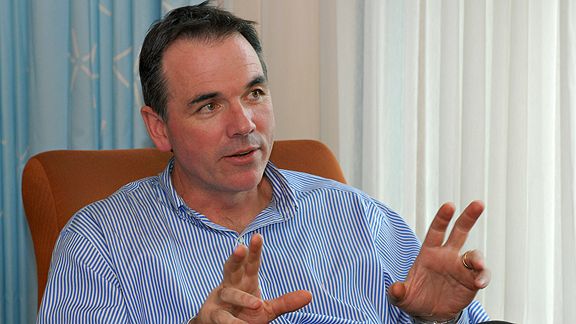
There’s a peculiar piece in The Atlantic about peculiar behavior of robot traders.
As usual, I have no idea what these robots are up to, but it probably isn’t about making me rich. The picture shows “an extreme closeup of just one second of trading of the stock SHG, the Shinhan Financial Group. This is 760 quotes from a total of 10,000 made in 12 seconds.”

Now, why would a robot do that? There’s no telling with these robot traders.
My suggestion is to take these pictures and ask Professor Azzi.
I bet he has an explanation.
 Let me ask you a question — is that enough to knock that program off of your trusted sources list? They ostensibly write about economic issues, yet neither the founder/writer nor any editor/producer was able to catch such a colossal blunder. If they are that confused about the easy stuff, how much do you trust them to explain credit default swaps or the toxic assets program? (And, as regular readers know,
Let me ask you a question — is that enough to knock that program off of your trusted sources list? They ostensibly write about economic issues, yet neither the founder/writer nor any editor/producer was able to catch such a colossal blunder. If they are that confused about the easy stuff, how much do you trust them to explain credit default swaps or the toxic assets program? (And, as regular readers know, 

 During the recent oil price spike in 2008, one of my mates suggested that our generation will be the last to enjoy relative ease in air travel. A large number of people, even those with decidedly middle class incomes, have the means to travel extensively and find their way to every nook and cranny the world has to offer. A sustained oil crunch, absent a viable fuel substitute, could indeed cripple the airline industry and leave globetrotting to the relatively affluent.
During the recent oil price spike in 2008, one of my mates suggested that our generation will be the last to enjoy relative ease in air travel. A large number of people, even those with decidedly middle class incomes, have the means to travel extensively and find their way to every nook and cranny the world has to offer. A sustained oil crunch, absent a viable fuel substitute, could indeed cripple the airline industry and leave globetrotting to the relatively affluent. It’s the middle of the summer, and it’s time to check in
It’s the middle of the summer, and it’s time to check in  Our first edition of the summer mailbag is here with a contribution from the always ebullient “Mr. O,” who says he sees economics everywhere these days. The article in question has to do
Our first edition of the summer mailbag is here with a contribution from the always ebullient “Mr. O,” who says he sees economics everywhere these days. The article in question has to do  Almost unnoticed, this week marks a terrible week for advocates of market solutions to environmental problems, including various cap-and-trade systems. The Wall Street Journal
Almost unnoticed, this week marks a terrible week for advocates of market solutions to environmental problems, including various cap-and-trade systems. The Wall Street Journal 
 I came across a research note on how bloggers reveal their personality types through their word choices.
I came across a research note on how bloggers reveal their personality types through their word choices.